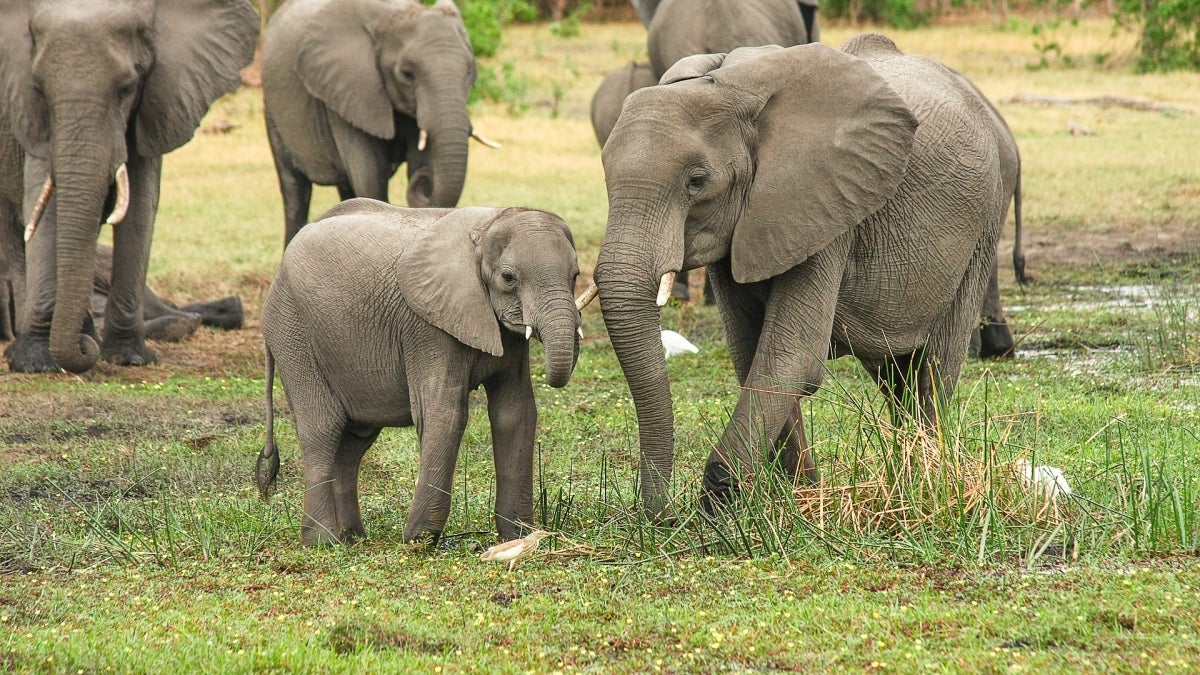Africa harbors the greatest diversity of large-bodied mammals today, though this was not always the case. As recently as 50,000 years ago, virtually all of Earth’s continents were populated with a great variety of species rivaling Africa’s present-day diversity. North America and Eurasia hosted ice-age icons like wooly mammoths and saber-toothed cats, giant kangaroos and 6,000-pound wombats roamed the Australian Outback, and gorilla-sized lemurs ambled across the forest floors of Madagascar.
Unfortunately, all of these creatures disappeared during the last 50,000 years as our species — Homo sapiens — spread across the globe. Though long a source of heated debate, it is now clear that humans equipped with advanced stone tools were largely responsible for the demise of these large mammals. These extinctions occurred in virtually every region of the world except Africa, where most large mammals survived to the present day.
For the last 50 years, the common explanation for this anomaly has been to invoke ancient hominin impacts in Africa. That is, because human ancestors have been present in Africa for nearly 7 million years — much longer than any other region of the world — they likely caused extinctions earlier in Africa than anywhere else.
But a team of researchers, including 2018 Arizona State University doctoral graduate John Rowan, have overturned decades of thinking on ancient hominin impacts in Africa. Rowan is now a postdoctoral scientist with the University of Massachusetts Amherst. He studied with the School of Human Evolution and Social Change, advised by Institute of Human Origins’ researcher and SHESC Director Kaye Reed.
Africa contains the greatest diversity of large-bodied mammals in the world today. This includes five species of megaherbivores (herbivores over 2,000 pounds). From left: the hippopotamus (Hippopotamus amphibius), giraffe (Giraffa camelopardalis), elephant (Loxodonta africana), white rhino (Ceratotherium simum) and black rhino (Diceros bicornis).
The team’s research, published Thursday in Science, shows that early hominin species played little to no role in driving mammal extinctions in ancient African ecosystems.
The research team focused their analyses on the very largest mammal species, so-called megaherbivores (species over 2,000 pounds). To test for ancient hominin impacts on megaherbivore diversity, the researchers analyzed a 7-million-year record of extinctions in Africa and compared it to milestones in human evolution that have been previously implicated in these extinctions. This includes, for example, the earliest stone tools and mammal butchery (around 3.4 million to 3.3 million years ago) and the first appearance of Homo erectus (around 1.9 million years ago), a species that made advanced stone hand-axes and is known to have consumed ample quantities of meat.
Rowan and colleagues showed that the decline of megaherbivores in Africa over the last 7 million years occurred independently of any milestone in human evolution to which it might be linked. In fact, the loss of megaherbivores begins 4.6 million years ago, a time when the only known hominin is Ardipithecus, a small-brained and ape-like human ancestor that lacked stone tools and at best hunted small prey like chimpanzees do today. Going a step further, the researchers propose that most hominin species over the last 4.6 million years were unlikely to have contributed to the demise of megaherbivores, as the rate of extinction does not significantly change from Ardipithecus onwards, despite the appearance of larger-brained and tool-bearing hominin species.

The decline of African megaherbivore diversity (gray curve) over the last 7 million years was driven by falling atmospheric carbon dioxide and the expansion of grasslands, not ancient hominin impacts. The onset of the megaherbivore decline around 4.6 million years ago (red dashed line and shading) occurs well before the appearance of tool-bearing hominin species capable of hunting large prey.
“If hominins were responsible for the extinction of megaherbivores, we would expect their decline to be more step-like and to track behavioral or adaptive milestones in human evolution” said Rowan. “It is instead gradual — playing out over nearly 5 million years — long before the appearance of any hominin remotely capable of taking down rhino- or elephant-sized prey. This suggests to our research team that widespread impacts on the large mammal species and terrestrial ecosystems might be unique to us — Homo sapiens.”
As an alternative to ancient hominin impacts, the researchers argue that the decline of megaherbivores is instead related to environmental change. The main culprits of this change were falling atmospheric carbon dioxide (CO2) and the replacement of large shrubs and trees by grasslands. They note that CO2 decline and grassland expansion are linked phenomena because tropical grasses have a greater ability to cope with low levels of atmospheric CO2 in comparison to trees. They also showed that many of the extinct megaherbivores were browsers who fed on the leaves of trees, suggesting they disappeared alongside their food sources as grasses came to dominate African savannas over the last 5 million years.
“Human impacts on Earth’s biodiversity have been significant and sometimes catastrophic,” said Rowan. “In this case, at least, our ancestors are not to blame. This is very clearly a long-term, bottom-up loss of diversity related to broader events in Earth’s climate and environments over the last several million years.”
Top photo by Pixabay
More Science and technology

ASU professor honored with prestigious award for being a cybersecurity trailblazer
At first, he thought it was a drill.On Sept. 11, 2001, Gail-Joon Ahn sat in a conference room in Fort Meade, Maryland. The cybersecurity researcher was part of a group that had been invited…

Training stellar students to secure semiconductors
In the wetlands of King’s Bay, Georgia, the sail of a nuclear-powered Trident II Submarine laden with sophisticated computer equipment juts out of the marshy waters. In a medical center, a cardiac…

ASU startup Crystal Sonic wins Natcast pitch competition
Crystal Sonic, an Arizona State University startup, won first place and $25,000 at the 2024 Natcast Startup Pitch Competition at the National Semiconductor Technology Center Symposium, or NSTC…

